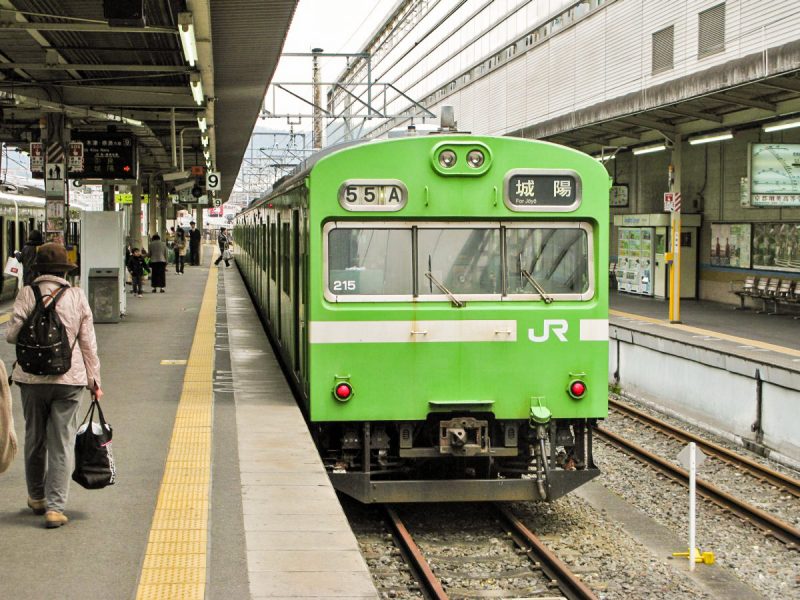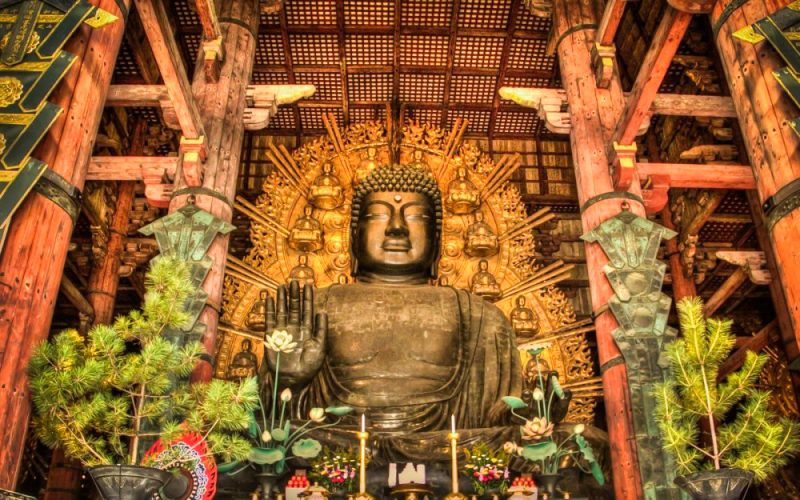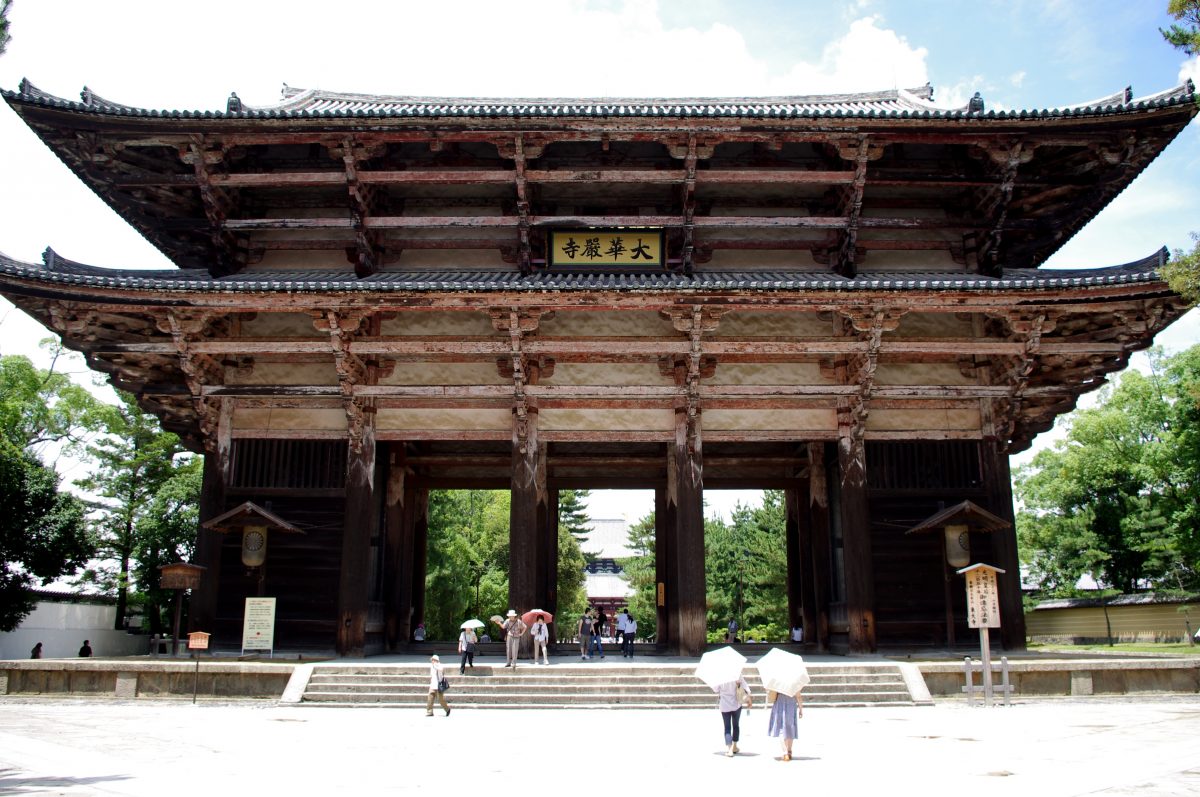Nara is an ancient city located in the Kansai region of Japan’s main island of Honshu. It was the first “real” capital of Japan, remaining such for less than a century. This historic location is home to a nearly unmatched eight UNESCO World Heritage Sites, including numerous Buddhist temples. The city was founded in the year 710 C.E. and originally known as Heijo.
Among its attractions are the oldest and largest wooden buildings in the world, the Nara Deer Park whose tame deer delight in entertaining visitors, fantastic cherry blossom viewing spots, and ninjas.
You can easily reach Nara from most of Japan’s primary tourist destinations. Read on to discover how to arrive at this fascinating city from Kyoto, Osaka and Tokyo.
Table of Contents
Nara’s train lines and stations
The JR Nara Station is serviced by the JR Nara line and Kansai Lines, as well as non-JR local lines. The non-JR lines of Kintetsu Railways utilize the Kintetsu Nara Station.
However, the Kintetsu lines are not covered by the Japan Rail Pass. The two stations are located at a distance of about 1 kilometer from one another and within walking distance of many city attractions.
Kyoto to Nara
There are two rail lines which connect Kyoto to Nara:
- JR Nara line
- Kintetsu Nara line
The Kintetsu line offers a limited express line that takes just 35 minutes. A one-way ticket costs 1,280 yen and it isn’t covered by the JR Pass.
Alternatively, the Kintetsu also offers a 45-min express service that costs 760 yen.
The JR Nara line takes 45 minutes by express train or 70 minutes if you catch a local train from Kyoto Station. It’s covered by the JR Pass but the price is 720 yen if you don’t have one. This is the best way to get from Kyoto to Nara if you have the Japan Rail Pass.
Osaka to Nara
Yamatoji rapid trains run every hour between Osaka and Nara from JR Osaka Station. The one-way trip takes 50 minutes and is covered by the JR Pass (it costs 800 yen without one). Passengers also have the option of getting off at Osaka Tennoji Station.
There is also the option of catching the Kintetsu Railways limited-express train from Osaka-Namba Station. It only takes 35 minutes (making it the quickest way) and costs 680 yen. The JR Pass is not valid on Kintetsu Railways.

From Tokyo to Nara
The quickest way of getting from Tokyo to Nara is by Shinkansen bullet train. The journey time from Tokyo to Kyoto is around 3.5 hours along the Tokaido Shinkansen line. It takes 45 minutes from Kyoto to Nara.
The fastest type of Shinkansen is the Nozomi, these trains are covered by the JR Pass if you pay a supplemental charge.
Additionally, Hikari Shinkansen (covered by the JR Pass) only take slightly longer to cover the distance. The frequency is fairly regular so it is worth waiting for the next departing Hikari train.
You can also take a highway bus from Tokyo to Nara. These take about 8 hours, and start from as little as 4000 yen. However, if you want to travel on a more comfortable bus tickets can go for over 8000 yen.
Things to do in Nara
Nara is full of unique experiences that bring Japan’s ancient heritage to life. It’s a much smaller city than other popular tourist destinations in Japan, so it’s a nice change of pace. Read on to discover some of the many attractions you can enjoy, including the famous Nara Park with free-roaming deer.
Conveniently, Most of Nara’s primary attractions are within walking distance of each other and the train stations. Extensive bus lines are available as well. Day passes may be purchased to cover bus fairs, and most major IC cards are accepted.
Visit the Todai-ji temple

Nara’s landscape is dappled with historic buildings and landmarks. Todai-ji, meaning “Great Eastern Temple,” is the largest of Nara’s numerous temple structures. In fact, the Daibutsuden, or Big Buddha Hall, is the largest wooden building currently in existence, and home to a huge, bronze Great Buddha statue 15 meters in height. Built in 752 C.E., Todai-ji was among the reasons that Japan’s capital was moved from Nara to Nagaoka in 784 – the government leaders of that time feared that the temple had gained too much influence in their politics.
You can reach this temple in about 30 minutes on foot from Nara Station, or about 15 minutes walk from Kintetsu-Nara Station.
Greet the deer at Nara Deer Park
Next to the temple is Nara Park, or Nara Koen, where over 1,000 deer roam freely for park guests to enjoy. It is not uncommon to see the deer just outside the gates of the temple. The animals often approach visitors, hoping to be treated with special crackers called shika senbei. These treats for the dear are sold in the park for around ¥150. Some deer have even learned to “bow” in order to beg for crackers.
Nara Park is just a few minutes walk from Kintetsu-Nara Station, and about 20 minutes on foot from Nara Station.
Attend centennial festivals at Mount Wakakusayama
During specific times of the year, Nara has additional interests to pursue. For example, on the fourth Saturday of each January, fires are lit on nearby Mount Wakakusayama in a festival known as Wakakusa Yamayaki. While this burning of the mountain involves local temples and has taken place for hundreds of years, its exact origins are unknown. It is thought that it may have begun in boundary conflicts between the temples or as a way to drive away dangerous wild boars. Fireworks and days of festivities accompany the bonfire.
The mountain is just 30 minutes walk from Kintetsu-Nara Station, or 40 minutes from Nara Station.
Enjoy the sakura at Mount Yoshino
In late March and early April, the sakura cherry trees blossom profusely throughout Japan. One of the most famous cherry blossom viewing locations is Mount Yoshino, also known as Yoshinoyama. The first cherry trees seem to have been planted on the mountain over 1,300 years ago. Today, more than 30,000 cherry trees reside there, providing a breathtaking spring display.
To reach Mount Yoshino from JR Nara Station, travel 45 to 60 minutes to Yoshino-guchi Station using the JR Pass.
No matter the time of year, there is plenty to do in the intriguing ancient city of Nara. You will not regret adding this excursion through the Kansai region to your next itinerary.
